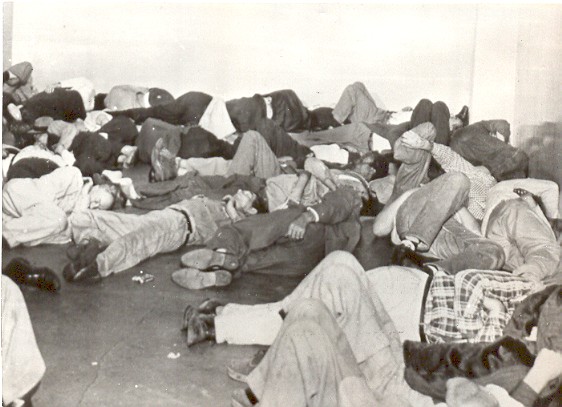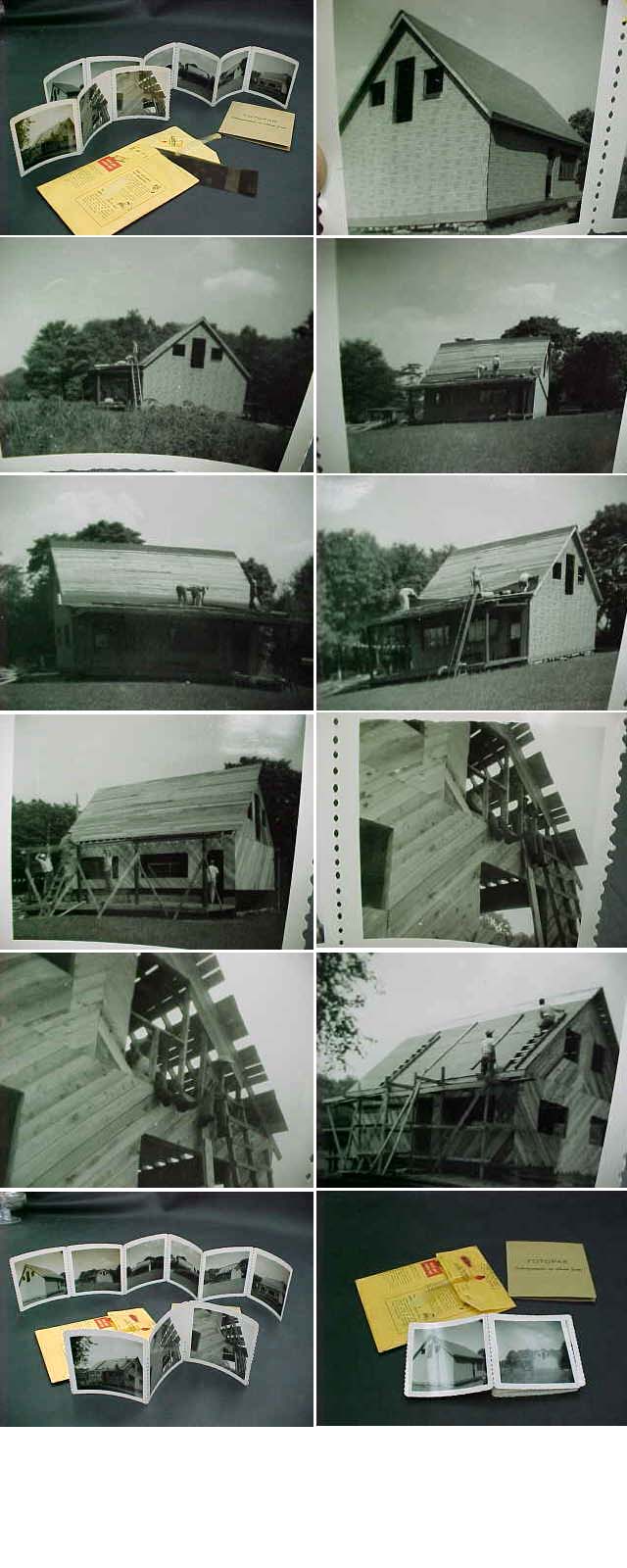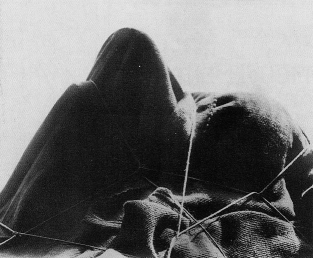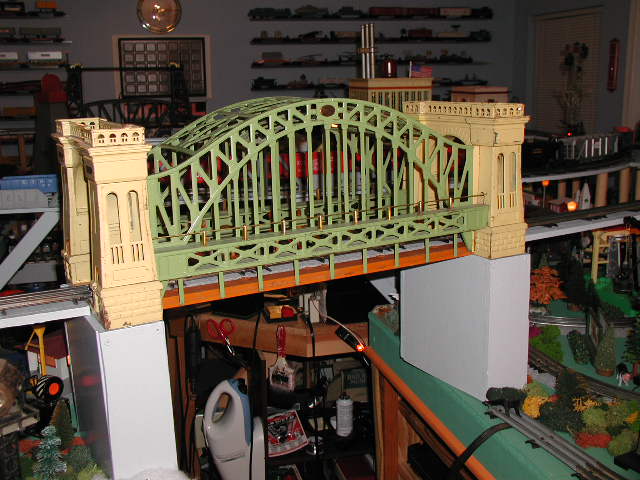Schwarz
View current page
...more recent posts
The utopias proposed by [Yves] Klein and Superstudio are rooted in an architectural systems aesthetics that mobilized the immaterial as a form of instrumental and political critique. Its origins can be found in the challenge to entrenched modern planning ideals launched by the Team 10(7) architectural group in postwar Britain, a time in which new techniques of military Operations Research and cybernetics were being made public. These had advanced a form of systems thinking that saw complexes of people and machines as information processing systems governable through procedures of decision and control. For Team 10, cities and buildings were no exception. Social change, previously imposed top-down by an avant-garde who assumed an a priori agency of architecture in bringing it about, was now seen as emerging bottom-up from society's own internal processes, which architecture and planning were to steward. The task of the designer was to build the hardware—the amplifiers, attenuators, and gates that regulated the rate and intensity of flow within those systems. At minimum, architecture was to be designed to not get in its way.
renzo piano for the hour on charlie rose
De l'Ecotais reveals the difference between the working methods of the two pioneers of the absurd: "Marcel Duchamp looked for his ready-mades in department stores, randomly, at a given moment. He then gave them titles and signed them. Man Ray, on the other hand, usually constructed images from everyday objects, which were then deliberately transformed by photography. It is the fact of being reproduced and relabelled which gives life to the objects."
So I guess Man Ray, who died in 1976, would have been delighted at the two dates on the Canberra label. But would he insist on the new versions being destroyed so that a third date might be added in future? As Umberto Eco famously wrote: "When originals no longer exist, the last copy is the original."
.........................................................................................................................................................................
"Gentlemen, I will now show you this text. Forgive me for using a photocopy. It's not distrust. I don't want to subject the original to further wear." "But Ingolf's copy wasn't the original," I said. "The parchment was the original." "Casaubon, when originals no longer exist, the last copy is the original."
-- Foucault's Pendulum, Chapter 18
"From the beginning, Olmsted and Vaux strenuously opposed all attempts to introduce art into the park. In their Greensward Plan of 1858—the competition entry that won them the commission—they wrote that while it would be possible to build elegant buildings in the park, "we conceive that all such architectural structures should be confessedly subservient to the main idea, and that nothing artificial should be obtruded on the view." They considered art a similar distraction from the restorative purpose of the landscape and kept statues out of the park. The sole exceptions were Emma Stebbins's Angel of the Waters, atop the Bethesda Fountain, and a series of figures representing prominent Americans that were to adorn the Terrace, but were never erected due to a shortage of funds."
By not burying a thing the dirt enters into the concept, and little enough separates the dirt inside the excavation from that outside.
Claes Oldenburg
"This account of Earthworks, sculptures best known as enormous mounds and excavations in remote wilderness environments, begins by looking into a hole dug in New York City's Central Park. The very fact that on Sunday, October 1, 1967, an excavation as a work of art was produced by Claes Oldenburg, one who can not be considered an earthworker but who was an innovator in the realms of Happenings and Pop Art, suggests the status in the art world at that time of working with geological material. Exactly a year later, at the Dwan Gallery in New York City, documentation of this work and also other sculpture by Oldenburg would go on view among sculpture by nine other artists in the exhibition earth works, the debut of the genre. Dug a year before that show brought the movement to widespread public attention, Oldenburg's temporary trench epitomizes the multiple sources of Earthworks and the relation of these works to the "dirt" around them."
L.A. drunk tank, 1955
John Cage & Morton Feldman: A Conversation
I love this 3-hour conversation between Morton Feldman and John Cage recorded in 1967. An excerpt:
Morton Feldman: Well, this weekend I was on the beach.
John Cage: Yes.
MF: ... And on the beach these days are transistor radios.
JC: Yes.
MF: ... blaring out rock 'n' roll.
JC: Yes.
MF: All over.
JC: Yes. And you didn't enjoy it?
MF: Not particularly. I adjusted to it.
JC: How?
MF: By saying that... Well, I thought of the sun and the sea as a lesser evil.
JC: You know how I adjusted to that problem of the radio in the environment? Very much as the primitive people adjusted to the animals which frightened them, and which, probably as you say, were intrusions. They drew pictures of them on their caves. And so I simply made a piece using radios. Now, whenever I hear radios - even a single one, not just twelve at a time, as you must have heard on the beach, at least - I think, "Well, they're just playing my piece."
frank stella
west broadway, 1958
seward park, 1958
untitled, 1958
boozy
jc hse
happy valentines day
[sheet iron and straw]
A 'Mini-Meier' Planned
A small condominium building will soon go up at 163 Charles Street, behind the new Richard Meier tower in the West Village. Call it mini-Meier.
The developer Barry Leistner bought the site, a 22-foot-wide, three-story brick building behind the newest of the three Meier towers on West Street, in December for $5.9 million. The previous owner had hired the architect Zaha Hadid to create a condo tower for the site, but then scrapped his plans and sold the property.
Now, the architect Daniel Goldner has designed an eight-story brick-and-glass building that will include an upper triplex, two 2,100-square-foot duplexes and ground floor commercial space. Mr. Leistner plans to live in the triplex and will sell the duplexes for about $2,000 a square foot.
Like the Meier building next door, Mr. Leistner promises high ceilings, floor-to-ceiling windows, radiant heat and basement wine cellars.
"It's a high-end neighborhood and it needs a high-end product," he said. "They've transformed the neighborhood and that's what happens."
Question: How do you know when there is a real-estate bubble? What do you measure, what factors are involved and how do you calculate it?
-- Zack, Laguna Beach, Calif.
This action of artistic sadomasochismo? an action pure surrealist, beyond that to make risvegliare the unconscious one omicida that it lives in all we and that often is expressed in practical the artistic one? also a message of Niki who wants dirci that the art work is born in the same moment in which it is killed, cos? as all the artistic revolutions always are been born from the ashes of that they have preceded to them. Man Ray ? an important point of reference for the Nouveaux R?alistes, gi? in 1935 it anticipates tableaux-pi?ges of Spoerri with the Collage work ou age de the hill. Made curious from the disposition of some objects it leaves you from the domestic servant on a table, blocks the objects with of the glue and frames this composition dictated from the case. In the 1920 Man Ray it executes the Enigma of Isadore Ducasse, one sewing machine wrapped completely with of the tied felt and with of the spago, anticipatrice of trentotto years the empaquetages of Christo. That Christo has seen or not the work of Man Ray, this does not have importance, all and the two artists play very on the straniamento sense and of mystery that an object assumes when it comes for entire or partially hidden alla.vista, moreover the use of the closely tied rope creates of the dynamic lines in all the work giving a sense of tension to an all communicating to us sense of anguish, sadistic constriction, overwhelming imprisonment.
... For Christo whichever type of woven being one of the devout manufatti ones? antichi of the man enclose in if a particular fascination and pu? often to assume one risen of human presence. The woven one softens and hides, and at the same time it puts in prominence the contours and the shapes that obvious were not (like every taylor very know). A empaquetage it transforms us? that? impacchettato, it renders it devout? sensuale, devout? scultoreo, devout? mysterious...
The substantial difference between Man Ray and Christo is in the fact that in the impacchettamento Christo completes an action of appropriation of the object, a conceptual operation dictated from one deep reflection. The infondato risk was not that one to reduce the gesture of the impacchettamento to one ritualizzazione, to one finalized operating praxis to the production of fine objects-feticcio to if same. The encounter and the frequentation of Yves Klein (between 1961 and 1962, little months before the dead women of Yves)? of extreme importance in the appropriativa evolution of Christo. The architecture of the air, the zones of sensibilit? pure, the Theatre of the Empty one marks one carried out in the conception of the empaquetage.
Hour? the space the element of comparison and challenge of Christo: the 27 june 1962 without some official permission a formed temporary monument from duecentoquattro benzine drums erects in rue Visconti in full load Saint Germain DES Pr?s to Paris to a nine of evening Rideau de fer stacks to you over the other for the height of approximately four meters and means, bloccando for three hours the surrounding traffic and irritateing and sconcertando the residents who reacted turning upside down improperi and secchiate of water on the guilty. Later on Christo executes the Store-fronts, display windows of reproduced storees to natural and covered largeness from sheet until three quarters of their height. These storees recall to the memory the Empty one of Klein to the gallery of Iris Clert in 1958? how if Christo had had in eredit? _ from Klein the the authorization to impacchettare the empty, the immaterial, the spiritualit? pure. From this Christo moment the worthy heir of Klein becomes a.ragione, from 1962 practically impacchettato of all, objects, persons, monuments, bridges, buildings, entire spiagge and islands, valleys, rivers and seas are furrow to you from its drop curtains. The art? conciliated with the world perch? the same world? fact art.
history chanel > modern marvels > building a skyscraper
short history of sound art
lionel hellgate bridge
runs on batteries not seeds
what is it about architects ?
via selma
copyrighted public space
I've Heard About Node 1
A viab would produce structures that are not set and specific, but impermanent and malleable - merely viable - made of a uniform, recyclable substance like adobe. The automaton's output would have no innate design, boundaries, or service life. It would take whatever form was called for at the moment - a great rotting blooming stony bubble of a building that, unlike all previous forms of human habitation, would be unplanned, responsive, densely monitored, massively customized, and rock-solid, with all modern conveniences.
The closest thing to a viab today is a small, modest mud-working robot invented by Behrokh Khoshnevis, a professor of engineering at the University of Southern California. Khoshnevis' "contour crafter" works more or less like a 3-D printer, but it's meant to assemble whole buildings. Its nozzle spits wet cement while a programmable trowel smoothes the goo into place. Roche encountered Khoshnevis, and his agile imagination immediately started pushing the idea toward its limits.




